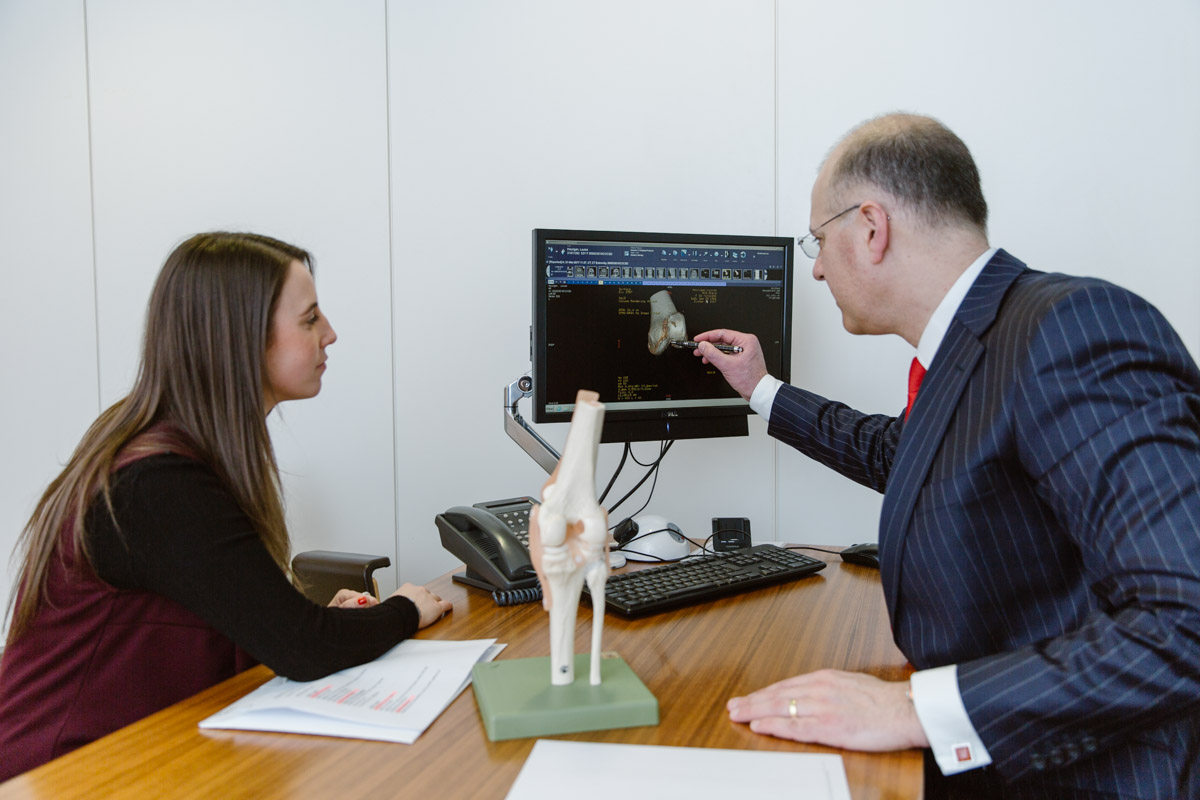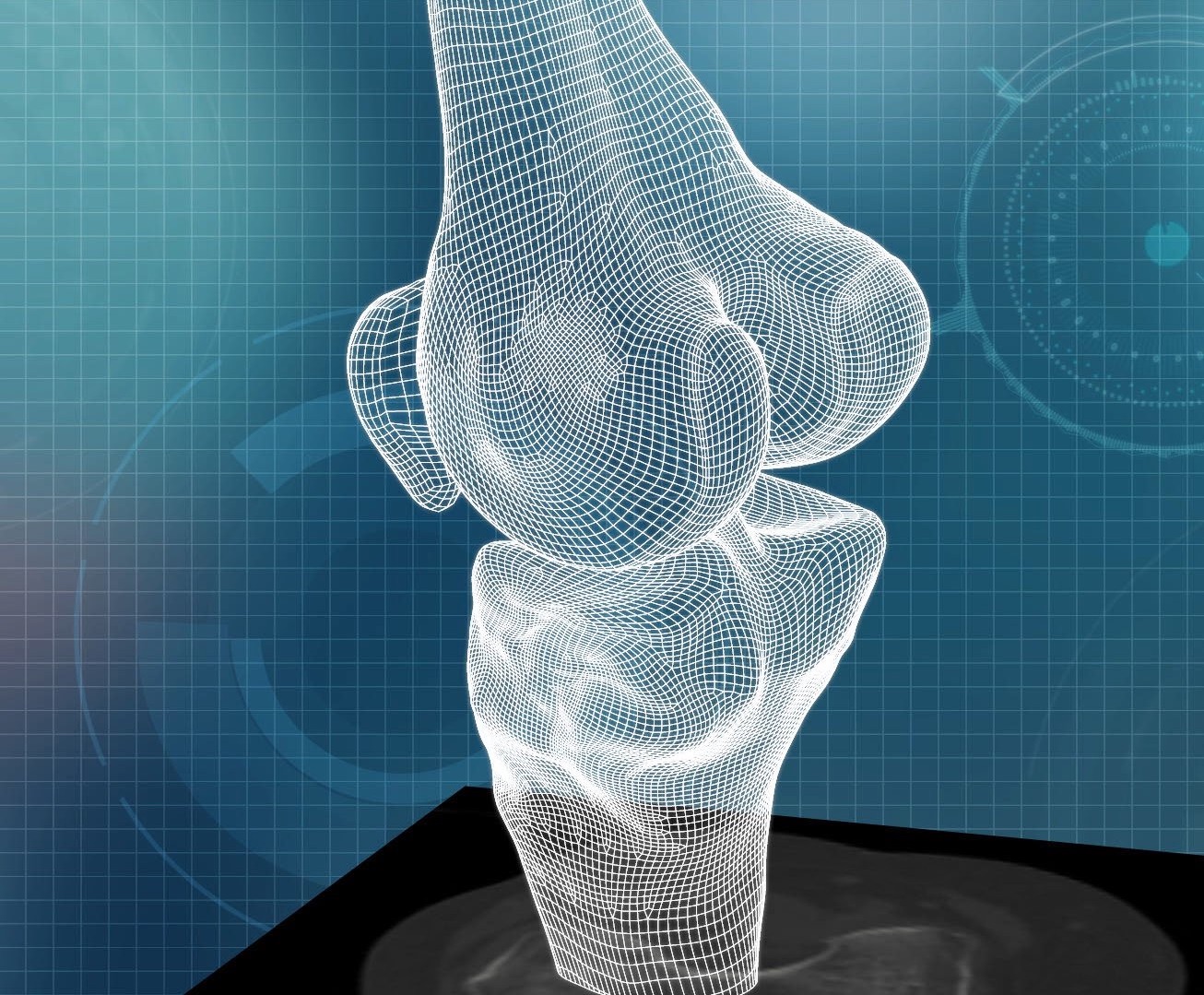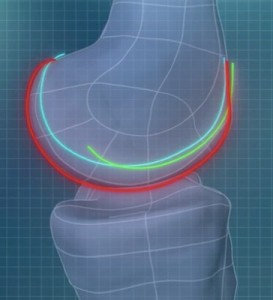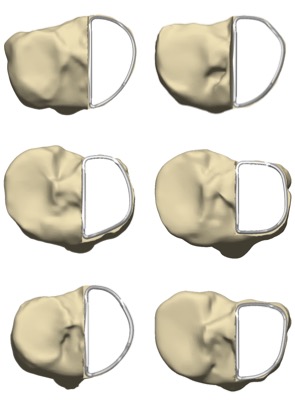Custom-made knee replacements
Standard knee replacements are designed to match an ‘average’ shaped knee, and they come in different sizes, e.g. Size A, Size B etc… If you’re lucky, and if you just happen to be right in the middle of a size range, then your prosthesis might match the size of your knee closely. However, if you’re somewhere in the middle, half way between two sizes, then you’re going to get a prothesis that is either slightly too small or slightly too big for your knee. Studies have shown that overhang of a prosthesis by as little as just 3mm can cause ongoing pain post-operatively due to the prominent metal edges rubbing/impinging on the soft tissues.

Likewise, not only do people come in different sizes, but they also come in very different shapes. A standard knee replacement is based on looking at what the shape of the knee is for a cohort of patients, with the prosthesis being designed to match the ‘average’ shape. The variation in shape between different patients can, however, be enormous, and therefore again, if an off-the-shelf prosthesis actually matches the contours of your knee then that’s down to good luck – but it’s certainly far from guaranteed.
If a knee prosthesis doesn’t closely match a patient’s knee, then the likelihood of the patient suffering ongoing symptoms (such as pain), of the prosthesis not moving quite normally (i.e. abnormal kinematics) and hence not feeling like a normal knee, and the probability of the patient not actually ending up happy with their new knee are all higher.
With all of this in mind, the biggest leap forward in the evolution of knee replacement surgery has been in the development of patient-specific custom-made knees that perfectly match the size, shape and contours of each individual patient’s knee with millimeter-perfect precision.
How is a custom-made knee designed?
With a custom-made knee prosthesis, the patient is sent for a CT scan of their knee. The CT data is then sent to the implant company and they create a 3D model of the patient’s knee. Femoral and tibial metal prostheses are then designed specifically for that patient’s knee, to match the exact size, shape and contours of the bone surfaces.
The exact plan for the design of the patient’s new knee is sent to the patient’s surgeon, for them to double check and verify the design.
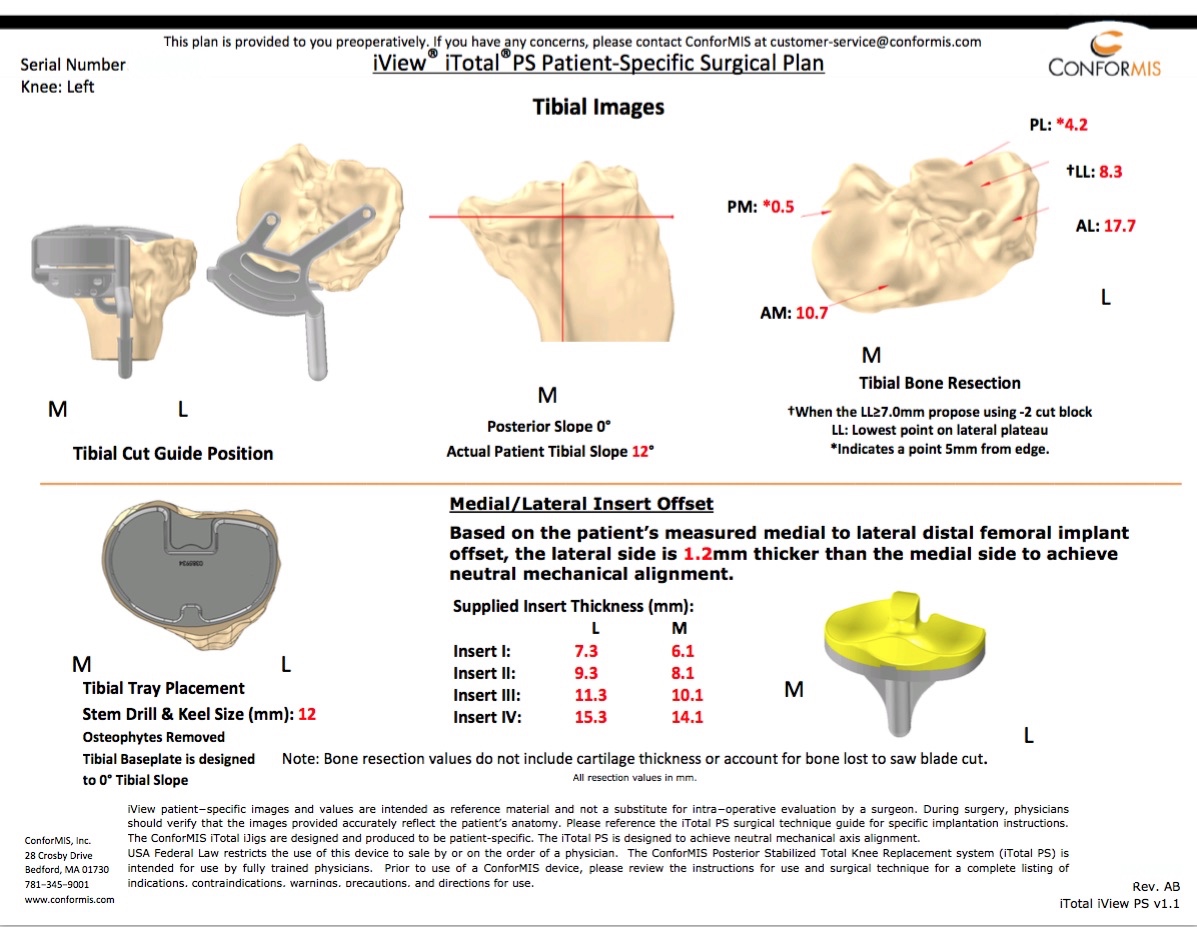
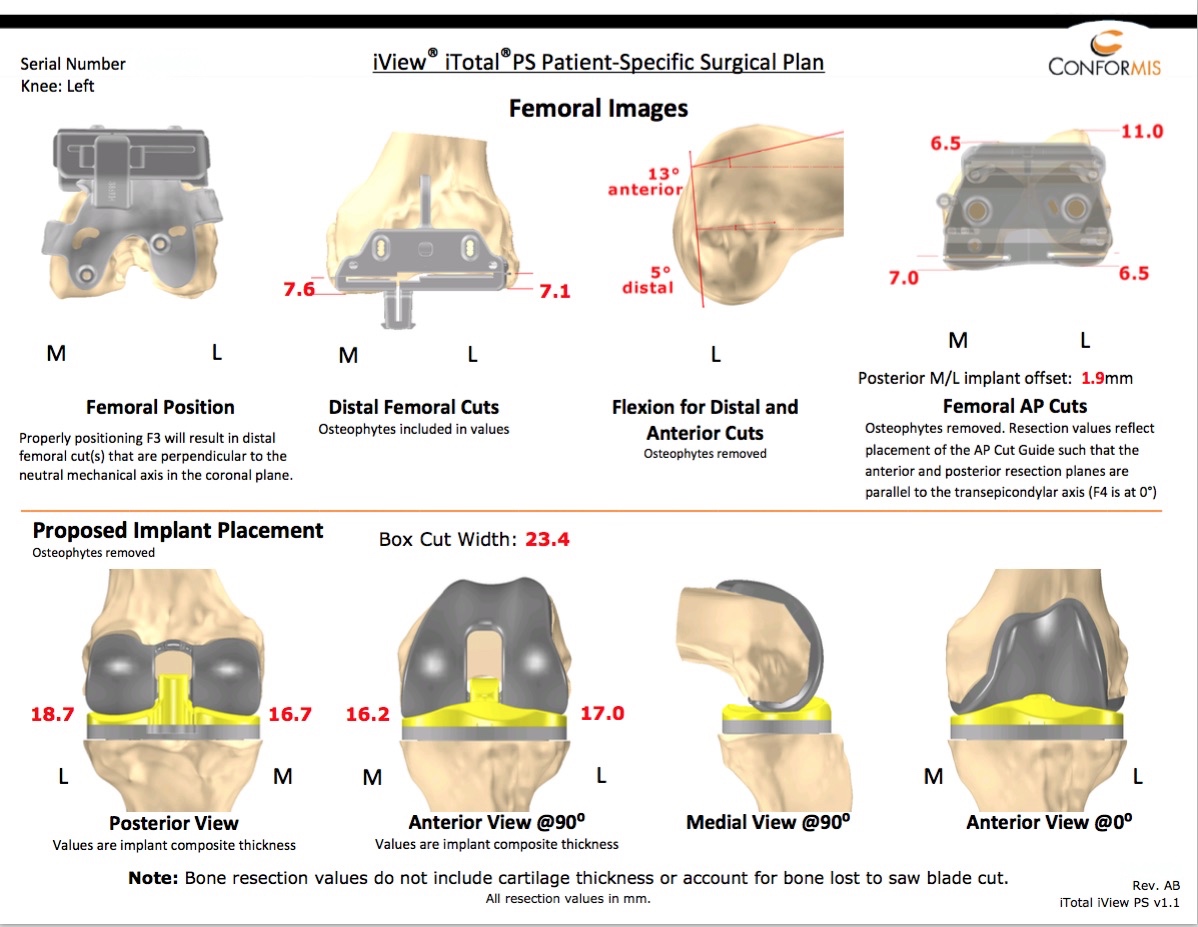
Custom-made cutting blocks for precision accuracy
Custom-made cutting jigs are then manufactured using 3D additive printing techniques, which create disposable jigs made individually for each specific patient’s knee that allow extremely accurate bone cuts to be made, ready for the surgical implantation of the actual prosthesis.
 These jigs are designed so that they can only fit in one position, and this therefore allows extremely accurate placement of all of the necessary surgical cuts, allowing for highly precise placement of the actual prosthesis in the knee.
These jigs are designed so that they can only fit in one position, and this therefore allows extremely accurate placement of all of the necessary surgical cuts, allowing for highly precise placement of the actual prosthesis in the knee.
Research published in The Journal of Knee Surgery in 2018 showed that custom-made cutting blocks are equally as accurate at computer-assisted surgery for ensuring accurate placement and positioning of knee prostheses, with 53 / 63 patients studied having perfectly aligned knee prostheses, and with the remaining 10 patients in the study having prosthetic alignment within ± 2°. CLICK HERE to read more.
How is a custom-made prosthesis made?
The metal prostheses for resurfacing the end of the femur and the top of the tibia are made of cobalt-chrome alloy. These are manufactured by 3D subtraction, whereby a cast block of metal is cut down to the required size and shape using diamond tipped burrs controlled by industrial robots.
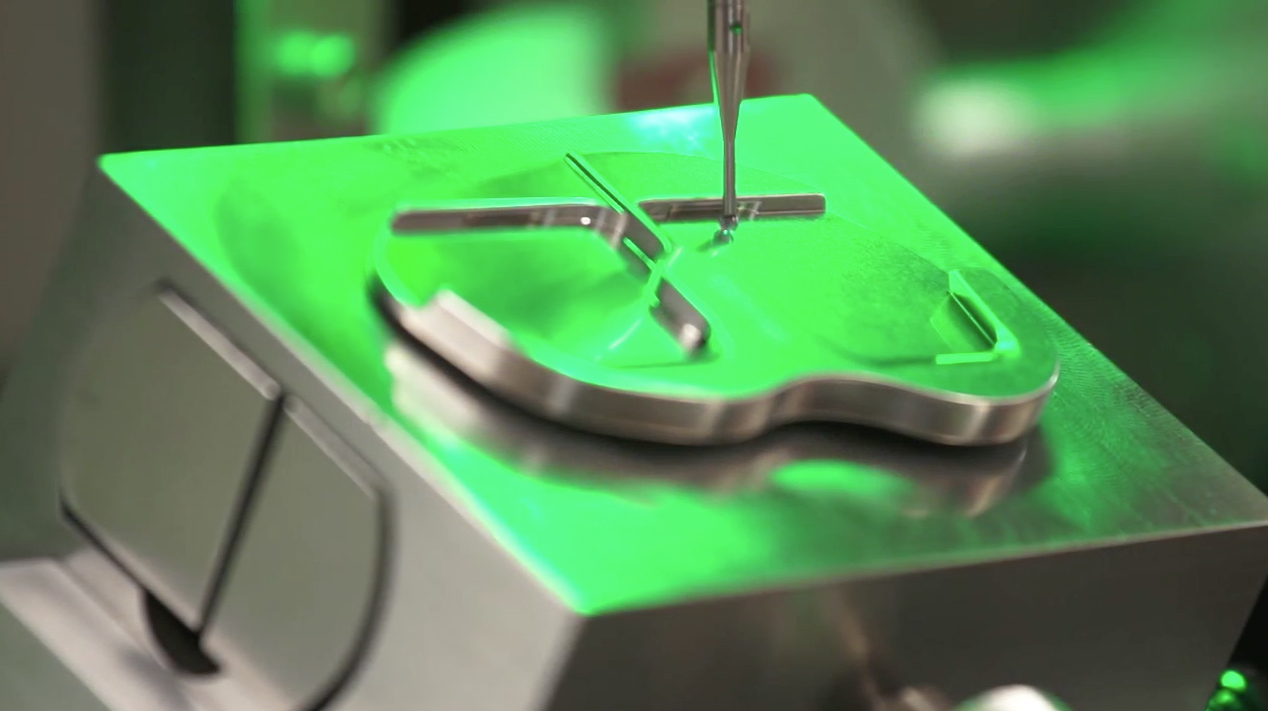
With these techniques, femoral and tibial prostheses can be manufactured with sub-millimeter precision that exactly match the patient’s knee.
What are the benefits of a custom-made knee replacement?
With custom-made knee replacement surgery, there are a number of distinct specific benefits for the patient:
- With a standard prosthesis, the patient’s bone has to be cut to fit the prosthesis. With a custom-made knee, the prosthesis is designed to specifically match the patient’s knee, and therefore less bone has to be removed. Preserving the patient’s bone improves the mechanical strength of fixation and it also means that there is more bone present (better ‘bone stock’) should the patient actually end up needing revision surgery at any point in the future.
- The surgical technique for custom-made knee replacement surgery is more conservative / less invasive, and it is therefore associated with less blood loss for the patient.
- A custom-made knee prosthesis exactly matches the size, shape and contours of the patient’s own knee, and hence it moves more normally, with better kinematics, and feels more like the patient’s own normal knee.
- Patients tend to make a quicker recovery with slightly easier rehab with a custom-made knee.
- Finally, and most importantly, custom-made knee replacements are associated with higher patient satisfaction rates than a standard off-the-shelf prosthesis.
What are the results and outcomes from custom-made knee replacement surgery?
One of the clearest studies to-date showing the benefits of a custom-made prosthesis was from Katthagen et al., and this was presented at the 2015 World Arthroplasty Congress.
In this study, 35 patients having standard off-the-shelf knee replacements were compared to a matched cohort of 35 patients having custom-made knee replacements with Conformis iTotal prostheses. The researchers found that in the off-the-shelf group, about 75% of patients were satisfied with their knee – meaning that 25% were not! In the Conformis custom-made knee group, however, about 95% of patients were happy! This should not be viewed as a 20% improvement in patient satisfaction rates… a better way of expressing this is that:
- with a standard off-the-shelf knee, 25% of patients are left unhappy with their knee, whereas
- with a Conformis custom-made knee, only 5% of patients end up unhappy with their outcome, i.e…
- custom-made knee replacement surgery is associated with an 80% reduction in unhappy patients!

Mr McDermott's opinion
The proof is in the pudding....
Find out more
CLICK HERE for the further information from Conformis
CLICK HERE to watch a summary of the 2018 London Custom-Made Knee Meeting
CLICK HERE for Mr McDermott’s blog on “So, just how good can a custom-made Conformis knee actually be?…”
Book an assessment
CLICK HERE to book and appointment for an assessment of your knee.
